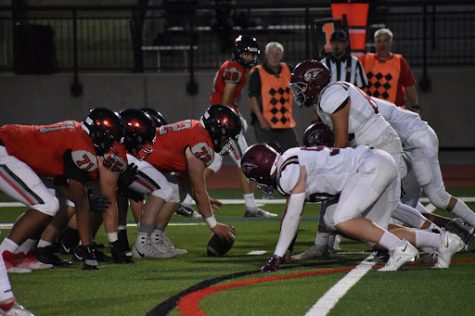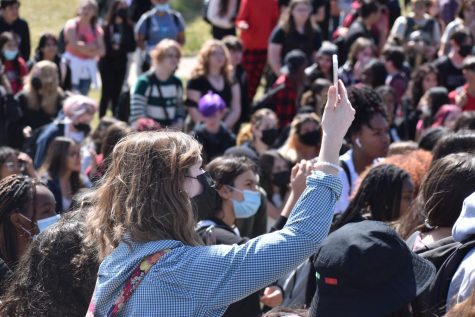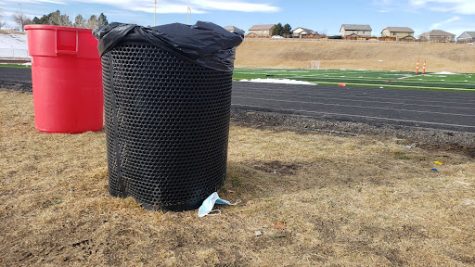College Prep Brings Stress in School
April 15, 2019
College. An integral piece of American society has been stirring up conversation for quite some time. Names like Stanford, Harvard, and Yale have historically been identified by fame and prestige, and recently were entrapped in a good deal of controversy, while still maintaining an elite “selective” process that is supposedly based on intelligence and capability. They are the best mode of access to high-paying careers. Today’s generations are taught to view these colleges as an ideal; the greatest achievement in education. We are taught that a good university will lead us on a path to success, and even prosperity. Higher education is something to be strived for, and achieved at all costs, and the emphasis on college preparation from modern education administration is extensive to say the least. From as early as Kindergarten we are annually tested and instructed on standardized skills all in alignment with the government prerogative for educational achievement or “college readiness”. College, instead of being presented as an option for students, is now highly suggested and communicated as essential to one’s career avenues and future success, even if it is not explicitly vocalized. So what’s wrong with an excessive amount of college preparation? It’s not that students are overwhelmed and over-pressured to perfect all educational aspects in order to get to that perfect college, which they are. It’s the fact that it distracts from a well-rounded education and all-in-all… doesn’t really work.
Eaglecrest is no exception to the nation-wide obsession with college readiness. According to Valerie Strauss for the Washington Post, the average American public school student will take 112 mandatory standardized tests by time they graduate. That statistic was taken in 2015 mind you, after which only one standardized test was required by the No Child Left Behind program, implemented in 2001 by president George W. Bush. The national school rankings, which are of course based on standardized test performance and college preparation, ranked Eaglecrest at approximately 1,500 out of almost 30,000 high schools nationwide with a silver medal in 2018. This is a wonderful achievement, but it should also reveal the emphasis that our school, just like most schools in the nation, places on college preparation. The dilemma presents itself when these encouraging statistics are revealed, yet the College Board then also follows with how Eaglecrest’s graduates are, when compared to district average, only 50% proficient in reading, and 45% proficient in mathematics. So, where’s the disconnect?
An essay, “Only if Past Trends Persist Is the Future Dismal”, assessed by Harvard professor Paul E. Peterson, laid out some points on national education that would come to pass in 2030 if the education system continues to receive the same treatment under government administration as it does now. Peterson summarized, “Test scores of those in the last year of high school (seventeen-year-olds) will remain essentially unchanged… High school graduation rates will decline from 72 percent to 68 percent of those who entered ninth grade four years previously… The performances in math and science of U.S. students will remain below the industrial world average… The percentage of students classified as disabled will rise from 15 to 22 % of the school-age population… The quality of the teaching force will decline significantly (as indicated by the test score performances of teachers and the selectivity of the colleges teachers attend).”
So, if a Harvard professor is saying that the current system isn’t working, why are the same techniques continuously being implemented even more intensely? A study by the Council of the Great City Schools found that students on average can spend from 20 to 25 hours a year taking standardized tests. Not only is this a hearty chunk of time, but the cumulative time spent in classrooms teaching and preparing for the tests, amounts to much, much more. This is educational time that could otherwise be spent on extending knowledge in content rather than test preparation, which to me, sounds much more lasting and valuable.
Understand that while Eaglecrest is not an anomaly, it also does have some flaws in educational value at a foundational level. Students are consistently tested and pre-tested for standardized tests. Many of the classrooms standards are taught strictly to the confines of state standards. From 9th to 12th grade, school counselors have one on one and classroom-based college preparation talks that exemplify unnecessary anxiety — instead of motivation — to get better grades.
Education is in a tenuous position right now in the United States, but students at Eaglecrest should also be relieved. As stated above, like any institution, Eaglecrest has weaknesses. But, there are also strengths. Not only is our population as diverse as the nationwide population (48% minority, 53% male, 47% female), but Eaglecrest’s 2018 graduation rate was 89%. So while students might be stressed, they are being taken care of and succeeding academically overall. It’s also important to remember that the education and support staff teaches to the Colorado State Standards. Cherry Creek is home to an intellectual and experienced population, of staff and students alike, but they have become victims to government educational agenda.
So, be thankful for Eaglecrest, but don’t stop asking questions and improving our school. It takes little steps to make big changes, and when you can’t change the government, change your local community. Spread the word that education should mean learning, and not passing.
















